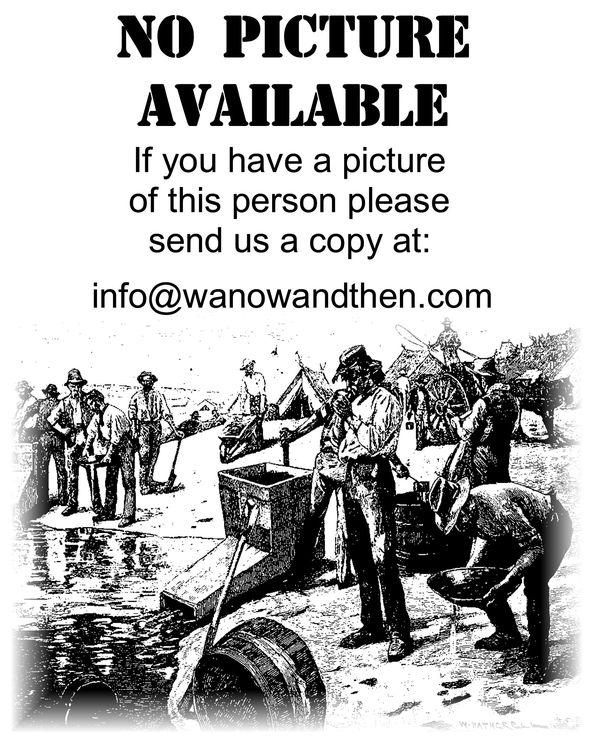|
On the way the men became lost and ended up on the coast 80 miles west of Albany where they spent some time foraging for food. When they finally made it to Albany
they were in a very poor state and were quite lucky to have survived. Their journey had taken 33 days (one source quotes 53 days), 19 of which were endured without
provisions. Note: The party actually took 27 days to reach the southern coast then ran out of supplies and took a further 19 days getting to Albany. (The differences given
in the length of the expedition seems to have originated from the actual start point being at Fremantle and the start of Bannister's journal which was near the present day
site of Kelmscot.)
Navigation was not exactly foolproof and Smythe, who was plotting the route, was out by a considerable amount. The actual route taken by Bannister was somewhat west
of the current Albany Highway, while Smythe's plotted points were closer to Narrogin and Wagin. You can't help but wonder what Bannister would make of the 4.5 hour trip
to Albany by car that we can now make.
By January 6th Bannister knew the expedition was off course and wrote in his journal: 'Where we are God Knows. I am sure of one thing that we must be a much greater
distance from King George's Sound that Mr Smythe's observations make us.'
During the journey Smythe was blamed by other members of the expedition for getting the party lost, one even threatened to shoot him. As it turned out it was a fault with
the sextant that was the cause of the errors and Smythe was not completely to blame.
Bannister and Smythe quarrelled over who was to blame for the near disaster, with Bannister claiming Smythe should have made sure he had the right equipment and
Smythe asserting that Bannsiter had interfered in the navigation. Who ever was to blame, the commandant at Albany (Capt. Barker) was more than relieved when the
bickering pair finally left for Perth.
Stirling offered the post of Resident Magistrate at Albany to Bannister but Bannister demanded too much and Stirling withdrew the offer and gave the position to
Alexander Collie. Bannister returned to his position as Resident
Magistrate at Fremantle.
After the arduous journey Thomas Bannister decided to leave the colony and move to Hobart - he had two sisters living there and had always intended to go at some stage.
In March 1836 he returned to England but he retained land grants in W.A. and in 1837 he came back to try and settle some land grant issues that had been a source of
irritation for some time. He got no satisfaction with regard to the land grant and returned to England again in October 1839.
At this point he appears to have dropped one of the 'n's from his surname becoming Thomas Banister.
In 1851 he was on the move again, this time to New South Wales and Victoria where he spent considerable time in the newly declared goldfields. A year later he was
back in England and in 1867 he married Lucy Spencer.
In 1874 Thomas Banister suffered a stroke and died. His remaining lands in W.A. were gradually disposed of but he is remembered in the name of a town (technically
two towns as Bannister and North Bannister are some distance apart), a street in Fremantle and a stream. Although the journey to Albany had almost ended in disaster,
Bannister and the men with him were the first Europeans to ever make the journey overland from Perth.
1. - PROMOTION IN THE BRITISH ARMED FORCES
Promotions in the British armed forces at this time were not gained, as we might expect today, by merit, but were purchased. Those with enough money could buy a
commission as an officer and this system led to a very unfortunate situation where any idiot with enough money could lead his troops into battle - and frequently into
annihilation. It says a great deal for the professionalism of the N.C.O.s - who were promoted on merit - that England managed to win so many wars.
Chronology
1799 - Born in Steyning, Sussex.
1813 - Thomas Bannister joined the 15th Regiment of Foot.
1826 - Purchased his commission as a Captain.
1829 - Arrived in W.A. aboard the Atwick on October 19th.
1829 - Joined Thomas Wilson on an exploration of the Canning River and part of the Darling Scarp
1830 - Overland expedition from Perth to Albany in December.
1836 - Returned to England in March.
1837 - Came back to W.A.
1839 - Returned to England in October.
1851 - Moved to New South Wales and to the Victorian goldfields.
1852 - Returned to England.
1867 - Married Lucy Spencer.
1874 - Died from a stroke.
Links to more information:
Thomas Bannister
Journals of Several Expeditions made in Western Australia during the Years 1829, 1830, 1831 and 1832
|


